by Naomi L. | October 27, 2017 | J.C. Wolfe's Writing, Poetry |
The sunset on the last October day
Will usher in the year’s most haunted night.
Throughout the streets, the monsters start to stray
To fill the evening air with screams and fright.
The autumn moon shines brightly in the sky.
The sound of howling werewolves gives you chills.
While vampire bats and witches’ broomsticks fly,
The ghosts and zombies fill the night with thrills.
Dressed up like all the monsters they adore,
Young children start their quest for something sweet.
They plan to knock on every neighbor’s door
And earn free candy shouting “Trick or treat!”
Enjoy the year’s most frightfully fun scene!
I wish you all a Happy Halloween!
by Naomi L. | October 25, 2017 | Blog, Creative Writing |
With Halloween just around the corner, it’s a great time to binge watch scary movies and practice writing horror stories. And the scariest part of a horror story—as well as one of the scariest parts of most stories in general—is usually the antagonist, the villain who embodies the evil of the plot and serves as the main barrier between the hero and victory.
But antagonists can also be the most challenging characters to write. Not only do you need to make them just as interesting as your protagonists in order to carry the story, but you often have to do it in fewer words, as villains usually get less focus and have limited room for character development. Not every writer can pull this off well, but fortunately, there are a few writing tips you can use to turn your villains from flat and boring to fascinating and terrifying.
So in the spirit of Halloween and scary characters, here are three writing tips to help you create villains who are just as interesting as your heroes. Enjoy!
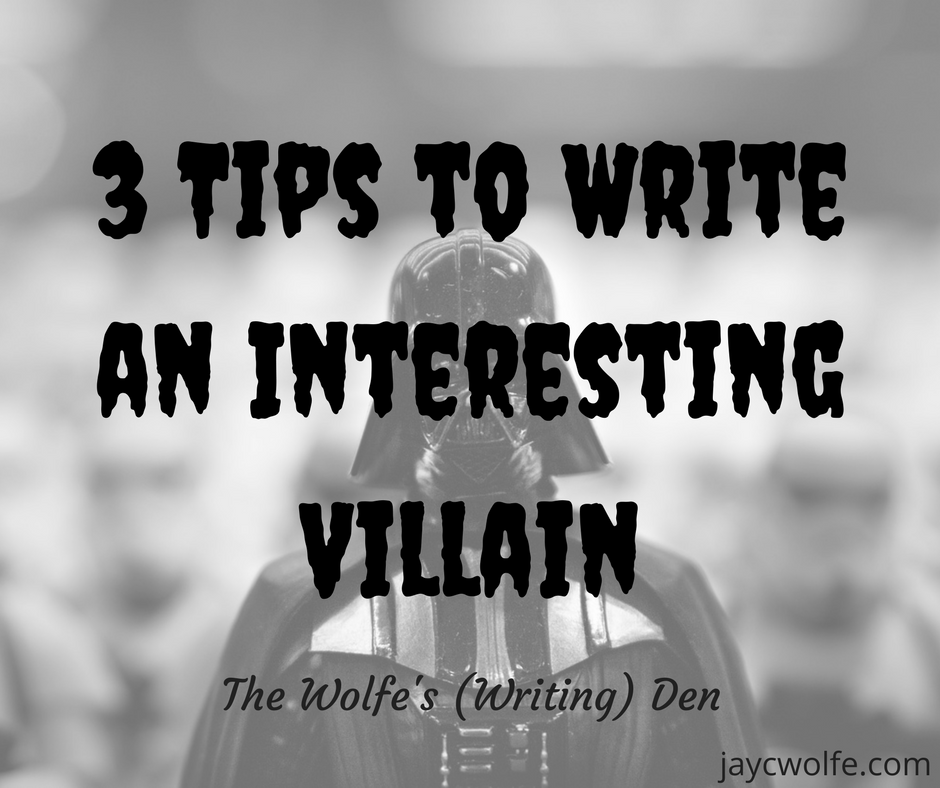
1) Villains should be just as three-dimensional as their heroic counterparts.
I’m bad, and that’s good. I will never be good and that’s not bad. There’s no one I’d rather be than me. – Bad-Anon closing affirmation, Wreck-It Ralph (2012)
Have you ever read a book or watched a movie that starred a kickass hero, but for some reason they never seemed to reach the peak of their awesomeness? Chances are what could have been a great story arc fell flat because of a terribly written villain.
We know that part of telling a good story is creating good characters, but many writers tend to focus all that character-building attention on their protagonists and not enough on their antagonists. (Don’t feel bad if you can relate; I’ve definitely been guilty of this myself.) I’m sure at some point, we’ve all fallen into the trap of making an antagonist “just a bad guy”, but it’s important to remember that villains are people too—well, in the broader sense of “sentient beings”—and much like real people, all characters should be three-dimensional. No exceptions.
Personally, I hate it when a villain has literally zero depth. It may seem like a good idea on the surface to make a bad guy as bad as possible, but no one is purely evil for the sake of being evil, any more than a hero is good just because the story calls for it. If we take exceptional care to give our protagonists clear dreams, goals, strengths, and weaknesses, we should do the same for our antagonists. A hero is only as good as their villain, right?
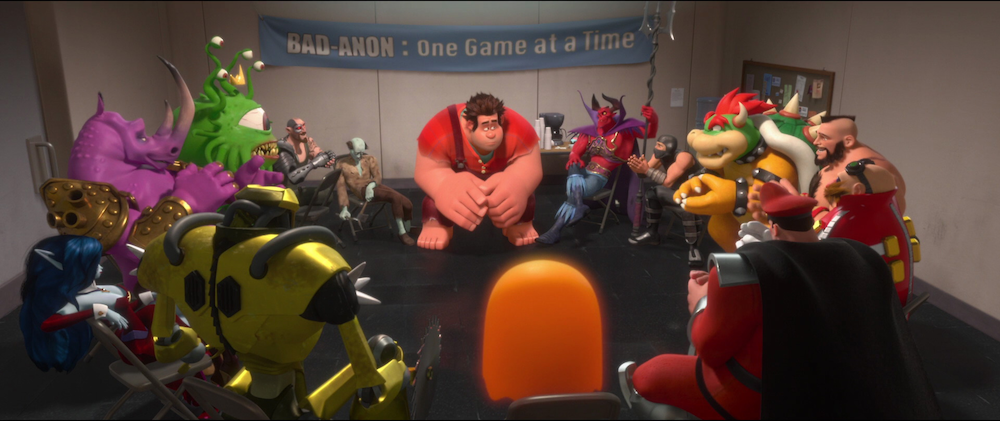
The Bad-Anon support group for video game villains (Wreck-It Ralph, 2012)
One of my favorite modern examples of how much depth a villain can have is the 2012 Disney movie Wreck-It Ralph. Given how everyone treats him like a monster and almost no one respects him, Ralph is a good example of a character who was forced into the role of a villain despite not actually deserving it. Of course, after leaving his game and setting out on his own adventure, he does prove to everyone that he’s much more than a “bad guy” in the end. While the movie isn’t about a “villain” per se, Wreck-It Ralph does teach two important lessons about antagonists:
- Villains and conflict are indispensable to storytelling (and therefore must be respected) – Fix-It Felix Jr. is no longer playable without “the bad guy who wrecks the building”
- No one is the villain of their own story – despite being the bad guy of Fix-It Felix Jr., Ralph is clearly the hero of his own adventure
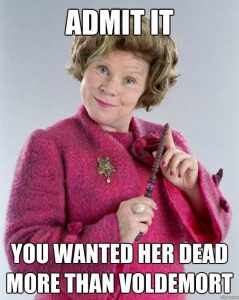 In contrast, my least favorite antagonists are usually the ones whose only defining characteristic is “being evil”. You know who I’m talking about: those one-dimensional a-holes with zero redeeming qualities who can make you fume or gag every time they appear on page or screen, like:
In contrast, my least favorite antagonists are usually the ones whose only defining characteristic is “being evil”. You know who I’m talking about: those one-dimensional a-holes with zero redeeming qualities who can make you fume or gag every time they appear on page or screen, like:
It’s one thing to give your character less-than-noble motives; it’s another to go out of your way to make the audience hate them. But then again, even “pure evil” can be interesting when written well (case in point: the villains listed above are all bad people, but not necessarily bad characters). It all comes down to a delicate balance between characterization and storytelling.
So when writing your antagonist, always make sure you give them as much background and attention to detail as you give your heroes. Remember that a good villain has depth and personality, not just “evil plans”. Bonus points if you can make your audience sympathize with the bad guy. After all, hero or villain, we’re all still people. Which brings me to the next point…
2) Nobody starts out as a bad guy, not even villains.
You either die a hero, or you live long enough to see yourself become the villain. – Harvey Dent/Two-Face, The Dark Knight (2008)
Although it’s easy to think of the world in terms of good and evil, the fact is that all people start out as blank slates. Every individual has a story to tell, a history behind the person they become. It’s the circumstances of one’s story—and the choices they make in response to those circumstances—that determine if they become a hero or a villain (or neither). In a nutshell, bad guys aren’t born, but made.

Maleficent crashes Princess Aurora’s christening (Maleficent, 2014)
A well-known modern example of the making of a villain is Disney’s 2014 Sleeping Beauty retelling, Maleficent. While the 1959 animated movie portrayed this character as little more than a vindictive witch (who seriously could not let go of a grudge), this version of the story digs a little deeper into how the fairy Maleficent became malicious enough to curse an innocent child. Between the beginning of the film and Aurora’s christening, we learn that Maleficent started out kind and idealistic, but her relationship with Stefan turned her bitter and vindictive against humankind. Say what you will about the film’s execution, but at least it establishes a clear backstory and motive for a character who would otherwise be just another run-of-the-mill fairytale villain.
If you feel your antagonist is missing clear motivation for their actions, try giving them a backstory that explains how they became evil. You don’t have to expose their entire life story to the audience, but at least convince us of their reasons for opposing the heroes. Show us what broke them so badly that it turned them to the dark side. Remember, the only people who start out as bad guys are cartoon villains; everyone else has a story.
3) An interesting villain is just as strong, smart, and capable as the hero (if not more).
A census taker once tried to test me. I ate his liver with some fava beans and a nice Chianti. – Hannibal Lecter, The Silence of the Lambs (1991)
Take a second to think about your favorite villains in any books, movies, or TV shows. What do they all have in common (aside from the fact that they’re doing bad things to good people)? Why do you find them so fascinating? Because they’re good at what they do!
The most interesting and popular villains are usually those who challenge the heroes, and it’s obviously not by being total pushovers. Darth Vader mercilessly kills any subordinate who disappoints him and pushes Luke Skywalker to his limit in their first lightsaber duel. Before his downfall, Voldemort was so terrifying that witches and wizards everywhere were afraid to say his name. A large part of what makes Hannibal Lecter so fascinating and frightening is how mysterious and complex he is. Basically, if an antagonist can draw your full attention and steal every scene they’re in, you know they can give the heroes a run for their money!
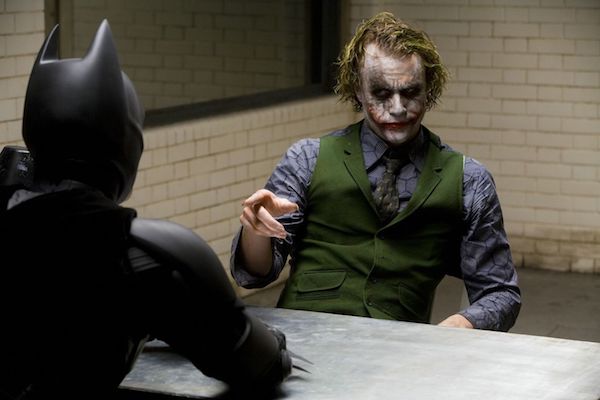
The Joker being interrogated by Batman (The Dark Knight, 2008)
One of the most popular examples of a brilliant and highly capable villain is the Joker from The Dark Knight. Aside from his unpredictability, a major reason the Joker is so interesting is that he’s one of the few villains who actually challenges Batman. Like the embodiment of chaos itself, he keeps the hero and the entire police force of Gotham guessing and thwarts them so many times that we as the audience can’t help but wonder what he’s going to do next at every turn. Now that’s a well-written villain!
So keep in mind, if you find your heroes aren’t reaching their full potential, the problem might be with your villains. Superpowers and high intelligence aren’t enough to make a great hero; you have to give them someone or something to use those abilities against. Make your antagonists just as strong and smart as the protagonists, then have them push each other to their limits. Only by overcoming a nearly insurmountable obstacle will your hero’s story arc be as satisfying and captivating as it deserves. In more ways than one, an antagonist can make or break your story!
Do you struggle with writing antagonists? What are your thoughts on these tips for writing an interesting villain? What other tips would you add to this list?
by Naomi L. | October 20, 2017 | Flash Fiction, J.C. Wolfe's Writing |
I didn’t believe it when they said what I’d become.
But deep down, I knew it must be true.
I no longer felt any warmth inside me.
The taste of blood had become delectable.
And the sunlight burned like fire.
Embrace the darkness, they said.
Accept what you are.
No longer human.
Cursed soul.
Vampire.
This piece is based on What If? Exercise 93: “Ten to One”. The exercise is to write a 55-word story in which the first sentence has ten words, the second has nine, etc., until the last sentence has only one word. The objective is to show that precision and thrift in writing can produce surprisingly powerful results. I hope you enjoy what I’ve written. Thanks for reading!
by Naomi L. | October 18, 2017 | Blog, Creative Writing, What If? Writing Prompts |
It’s the month of Halloween again, so here are some new “What If?” Writing Prompts for you to enjoy! This week’s set of prompts is centered around the genre of horror. What sorts of scary stories can you write from these ideas? Have fun!
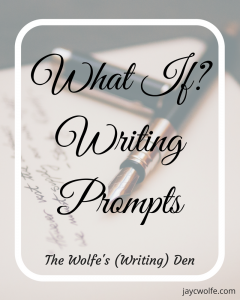 What if… every time you had a dream about someone you know, that person died within 24 hours?
What if… every time you had a dream about someone you know, that person died within 24 hours?
What if… you woke up with blood on your hands and no memory of how it got there?
What if… your dog started acting as though it wanted to eat you?
What if… you heard scratching against your bedroom door at night… even though you didn’t own a pet?
What if… the local haunted house attraction turned out to be filled with real monsters?
Good luck spinning some more tales of horror!
If you have any “What If?” writing prompt suggestions (for any theme), please feel free to share them in the comments below. Ideas I like may be featured in future “What If?” posts, with full credit and a link to your blog (if you have one)! Also, if you’ve written a piece based on an idea you’ve found here, be sure to link back to the respective “What If?” post. I would love to see what you’ve done with the prompt! Thank you!



 In contrast, my least favorite antagonists are usually the ones whose only defining characteristic is “being evil”. You know who I’m talking about: those one-dimensional a-holes with zero redeeming qualities who can make you fume or gag every time they appear on page or screen, like:
In contrast, my least favorite antagonists are usually the ones whose only defining characteristic is “being evil”. You know who I’m talking about: those one-dimensional a-holes with zero redeeming qualities who can make you fume or gag every time they appear on page or screen, like:

 What if… every time you had a dream about someone you know, that person died within 24 hours?
What if… every time you had a dream about someone you know, that person died within 24 hours?
Recent Comments